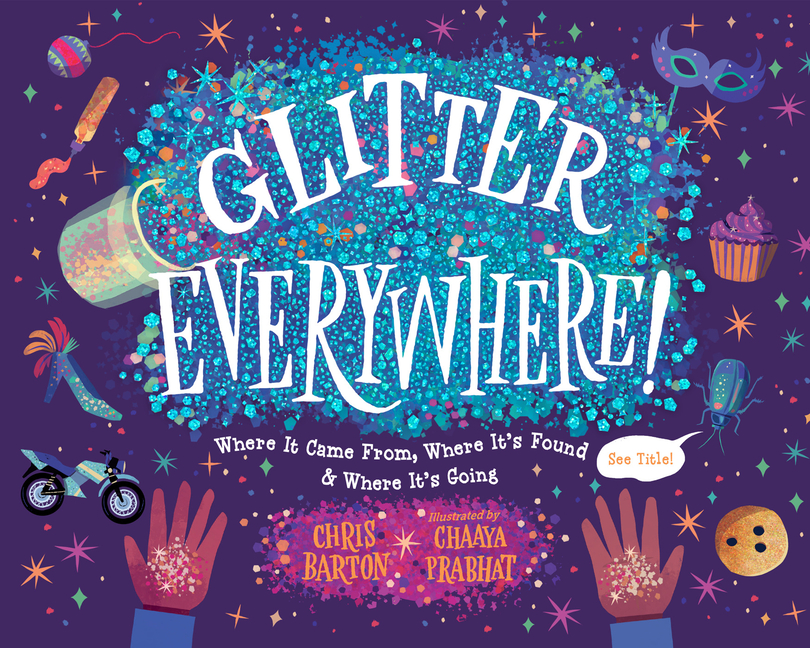Book Description
for Glitter Everywhere! by Chris Barton and Chaaya Prabhat
From Cooperative Children's Book Center (CCBC)
The scourge of many a household, glitter’s iridescence also makes it undeniably appealing. An explanation of the science behind why and how glitter shines begins this sparkling work of nonfiction. Evidence of human fascination with all that glitters includes iridescent beetle wings used by ancient Egyptians to decorate Tutankhamun’s tomb, and bits of mica that added sparkle to South African cave paintings, Greek pottery, and Mayan temple walls. More recently, early 20th invetningcentury U.S. manufacturers “cut mica, metal and paper into tiny pieces they called … flitter.” When the U.S. military required mica during World War II, Henry F. Ruschmann invented “slivers”—cut bits of thin plastic Eventually, Ruschmann’s sliver operation evolved into a glitter factory that is still in operation today. Over time, competitors created their own glitter, and the process was streamlined by cutting shapes with straight edges (less waste than circles) using a range of materials. Glitter pieces got smaller and were used in more and more products, from makeup to motorcycles. The final pages explain why glitter’s negative electrical charge causes it to stick so annoyingly to everything it touches; the negative impact of microplastics, including glitter, on the environment; and the dangers of mica mining, often performed by children. Recently developed biodegradable glitters sourced from plant cellulose and tree sap resin filled with hatched insect eggs may offer safer ways to continue sparkling. This fascinating history is as irresistible as glitter itself. (Ages 6-10)
CCBC Choices 2024. © Cooperative Children's Book Center, Univ. of Wisconsin - Madison, 2024. Used with permission.


